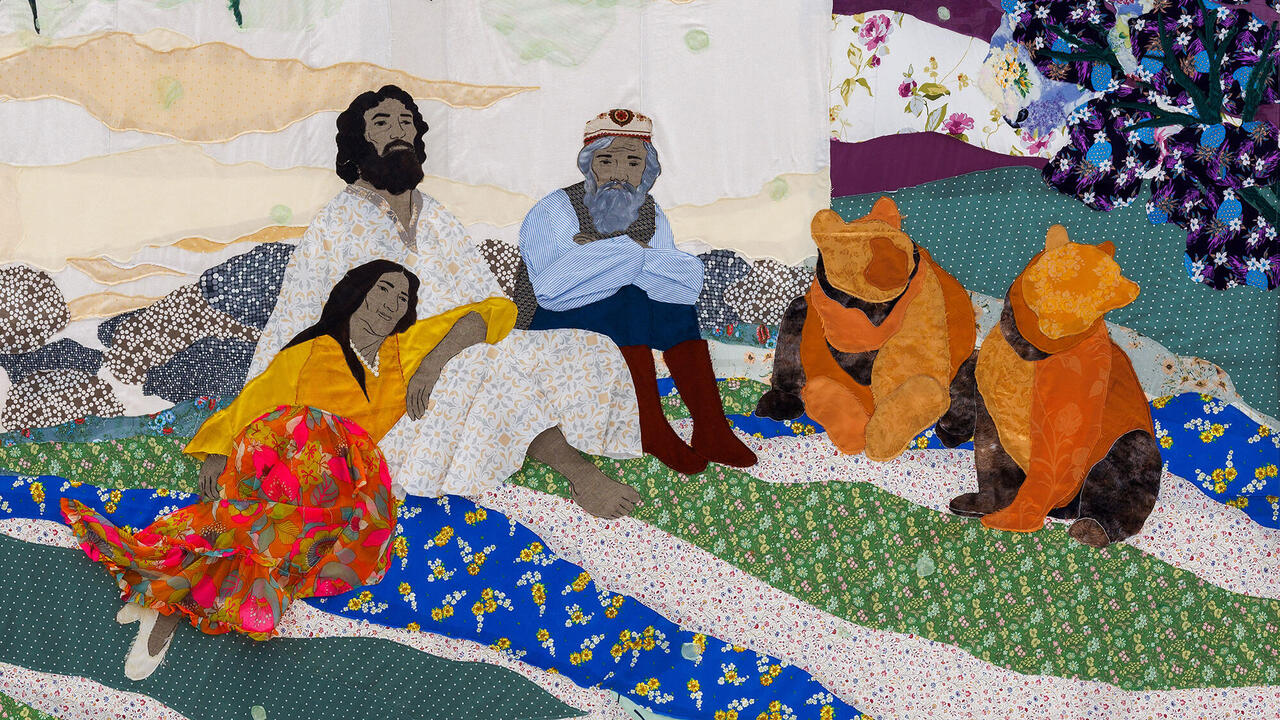Nina Katchadourian
Close your eyes and imagine the sounds of a perfect late summer’s day in the country, and you may conjure in your mind’s ear the breeze swirling through a meadow of tall grass, the rustling of leaves high on a great oak bough or the drone of crickets in the undergrowth. You are less likely to imagine yourself accosted from the trees by avian cries of ‘Cheeseburger ... cheeseburger … cheeseburger’, ‘Old Sam Pea-body – Pea-body, Pea-body’, ‘Oolong tea, Oolong tea!’ Who would have guessed that nature could be so emphatically, maddeningly chatty? But as any amateur ornithologist or weekend naturalist can tell you, the seminal field guides to the North American songbird are full of such quaint, dated and at times grating linguistic approximations of birdsong. It is these phonetic equivalents, transliterations and occasionally comical mnemonic devices that form the basis of artist Nina Katchadourian’s recent, clever and lyrical multi-part sound work Please, Please, Pleased to Meet’cha (2006), discreetly installed in six different spots in the trees and woodlands of the bucolic Wave Hill gardens, in the Riverdale section of the Bronx. Overlooking the sloping banks of the Hudson River, Wave Hill is an oddly unnatural natural place, a leftover bit of pastoral 18th-century New York preserved within the city limits of a teeming metropolis. As such, it is also an important layover spot for migrating songbirds and an oasis for year-round locals.
With Please, Please, Pleased to Meet’cha, Katchadourian similarly spotlights the ways in which humans, in their drive to acculturate the animal kingdom, to discern meaning and order in the natural world, concoct one interpretive artifice after another. Drawing on the unique phonetic texts and diagrams of Aretas A. Saunders and his Guide to Bird Songs (1935) and the many mnemonic phrases and ditties devised by scientists from the early 19th century onwards, found in such popular works as the Peterson Guide to North American Birds or the Audubon Society Field Guide, Katchadourian enlisted professional translators and interpreters from the United Nations headquarters downtown (none of whom knew a thing about birds) to record unrehearsed vocalized interpretations of these texts. None of the participants had ever heard the actual songs or sounds of the Black-Capped Chickadees or Common Grackles in question. Instead, the experiment was akin to asking an English-speaker to read a text in Swahili based solely on phonetic field notations or a quasi-scientific system of linguistic diagrams. The resulting recordings, unsurprisingly, sounded little like birdsong. Strolling from tree to tree, one was greeted by a sort of arboreal Dada performance, as though Kurt Schwitters were stuck up in the canopy of an elm doing his best to sound like a Grey Catbird – ‘eetay … taytitee … tata tay … toolotay … eetayoteee … totoo … tileetilee’ – while Raoul Hausmann hid in the brush reading his latest Red-Winged Blackbird poem: ‘konkler-eeeee … kuklakler-eeee … tup …’ Elsewhere, one could compare the repetitive mnemonic pleasantries exchanged by the Chestnut-sided Warbler (who is either eternally ‘very … very … very … very pleased to MEET-CHA!’ or expressing the fervent desire to ‘see, see, see, see Miss Beecher!’ depending on the field guide one is consulting) and the White-Throated Sparrow, who, when not excitedly complaining about how Old Sam Peabody is ‘all day a-whit-tl-in’, all day a-whit-tl-in’’, seems preoccupied with migrating nationalistic odes: ‘Sweet, sweet, sweet, Canada, Canada, Canada!’
What a bird sounds like, indeed what an animal is ‘saying’ (if anything), depends entirely on the ear of the listener. And not all ears are alike, each being subjectively attuned to a different social, economic or cultural milieu and to conflicting or historically determined understandings of the use of language. From these recordings we discover little about birds and a lot about what Katchadourian calls the ‘very human sense of listening’, which is infused ‘with a well-intentioned but clumsy good will’ towards other creatures. The fact that many birdsongs sound suspiciously like sea shanty lyrics, rhyming limericks about rural life or the conversational manners of late 19th-century New Englanders is not an accident. We would prefer, it seems, to discover in their rhythmic whistles and warblings purer, more lyrical versions of ourselves. The almost instinctive impulse to anthropomorphize and find familiar reassurance in the behaviour of other animals may explain the clear sense of empathy saturating every page of F. Schuyler Mathews’ Field Book of Wild Birds and Their Music (1904), which Katchadourian cites as another curious influence on her investigations. In his attempt to convey the ‘discouragement’ expressed in the vocalizings of the White-Throated Sparrow, the author opines that there is ‘a sort of “Heigh-ho, fiddle-de-de!” character to the music which makes one think the little bird looks upon life and its cares as a tough problem.’ One wonders where the melancholy of the sparrow ends and that of the empathetic ornithologist begins.
















